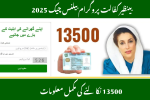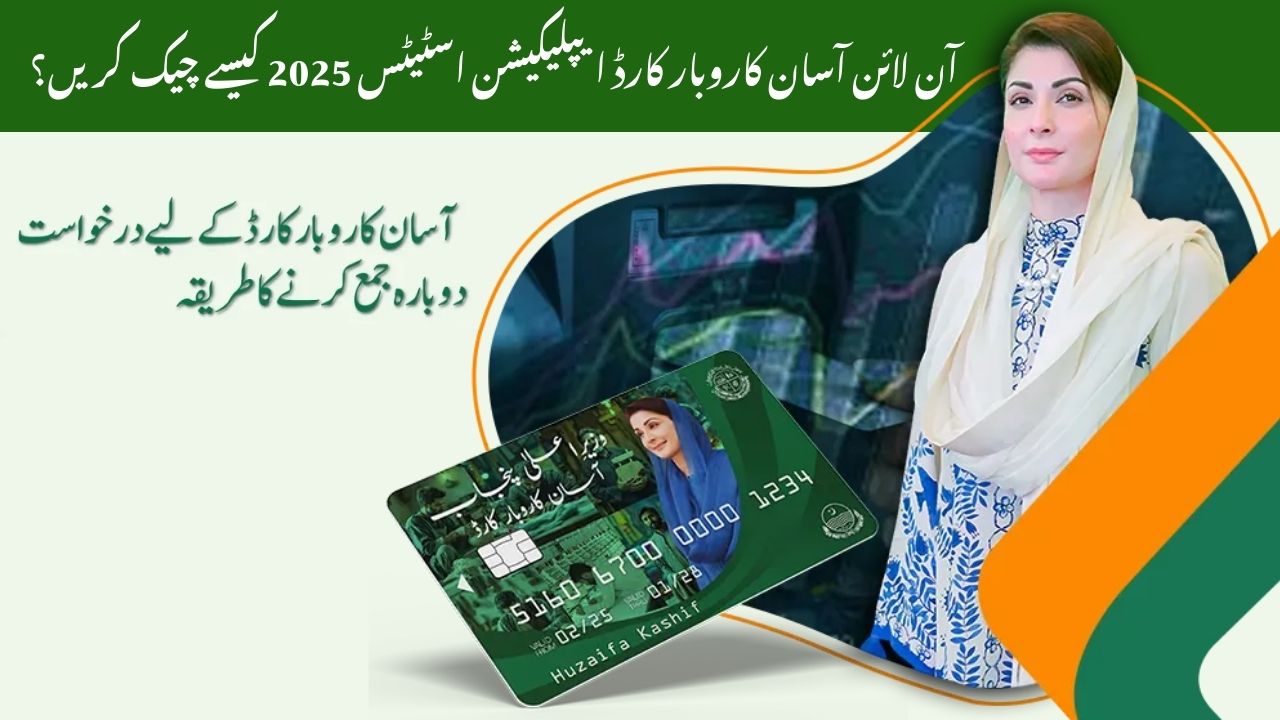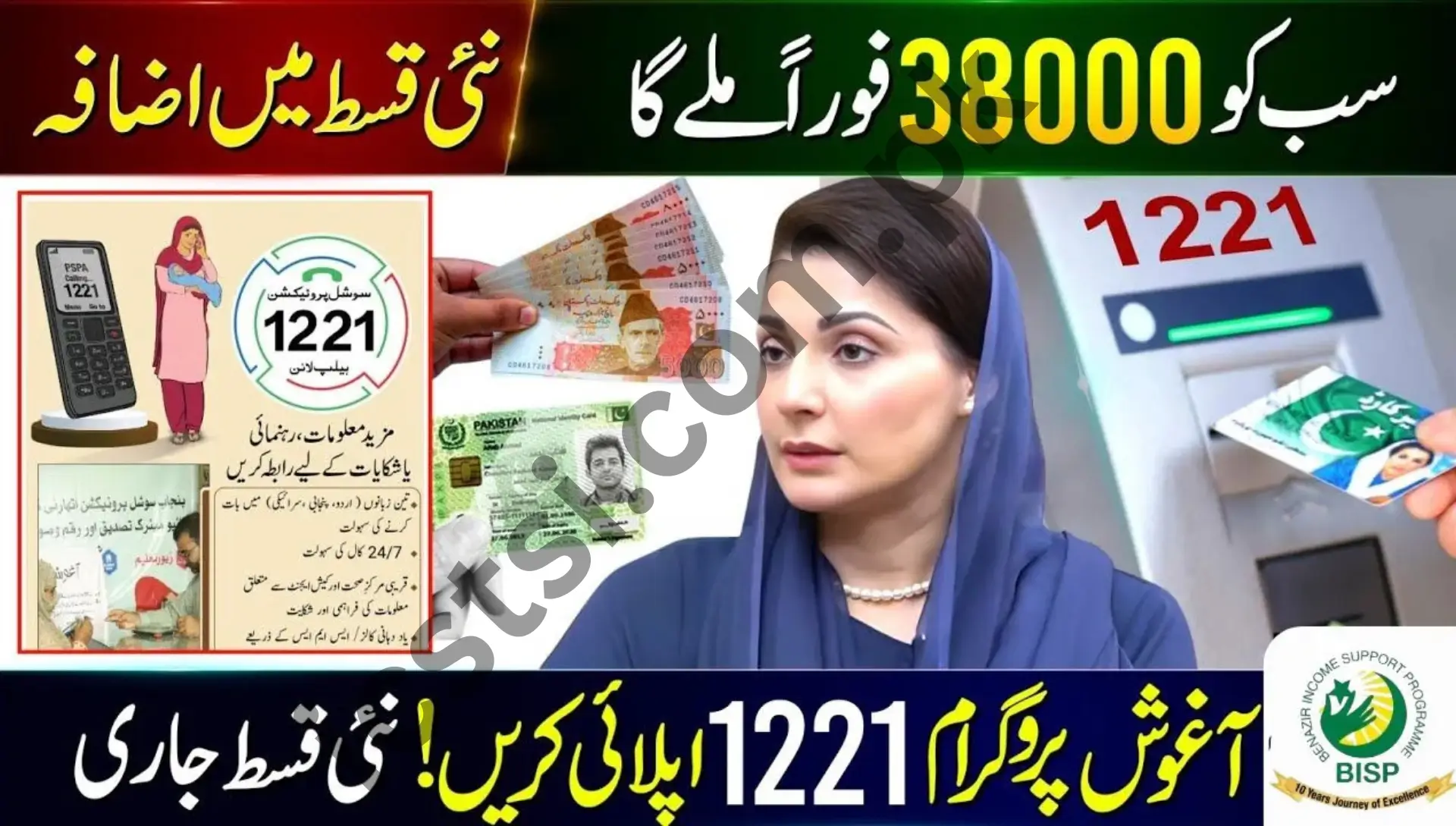Himmat Card Phase II. The Government of Punjab, under Chief Minister Maryam Nawaz Sharif, has officially launched the Himmat Card Phase II 2025, a landmark social-welfare program designed to empower persons with disabilities (PWDs) across the province.
Through this initiative, 25,000 new beneficiaries will receive quarterly financial aid of Rs. 10,500, raising the total number of recipients to nearly 65,000 individuals. The project stands as a symbol of dignity, inclusion, and economic independence for thousands who deserve equal opportunities.
What Is the Himmat Card Phase II 2025?
The Himmat Card is a flagship welfare scheme launched by the Punjab Government to provide sustained financial and social support to persons with disabilities.
After the success of Phase I, which benefited around 40,000 people, the new phase expands the program to an additional 25,000 recipients across both urban and rural Punjab.
Eligible beneficiaries will get Rs. 10,500 every three months directly into their bank accounts through a biometric-enabled ATM card, ensuring safety, transparency, and accessibility.
Goals of the Program
- To promote financial independence for PWDs
- To enhance accessibility to education and health services
- To reduce social inequality and support inclusion
- To enable dignified living through structured assistance
Why the Himmat Card Program Matters
The Himmat Card Phase II 2025 goes beyond just financial aid — it’s a comprehensive empowerment plan for people with disabilities.
Major Benefits:
- Quarterly Financial Relief: A regular stipend helps families cover medical costs, therapy sessions, and daily needs.
- Educational Support: Parents can use funds to pay school fees or buy assistive learning materials for children.
- Restoring Dignity: Instead of charity, the program provides structured and transparent support that respects beneficiaries.
- Inclusive Reach: It targets rural and flood-affected areas where PWDs often lack access to government aid.
Key Features of Himmat Card Phase II 2025
| Feature | Details |
|---|---|
| Program Phase | Phase II (Launched August 2025) |
| New Beneficiaries | 25,000 additional persons with disabilities |
| Total Beneficiaries | Around 65,000 PWDs across Punjab |
| Quarterly Stipend | Rs. 10,500 every three months |
| Payment Method | Biometric-enabled ATM Card |
| Transparency Measure | Central monitoring cell with digital tracking |
| Priority Groups | Flood-affected families and Phase I left-outs |
The program is digitally monitored and corruption-free, ensuring every rupee reaches the rightful recipient without middlemen or delays.
How to Apply for Himmat Card Phase II 2025
If you or someone you know qualifies, follow these simple steps to register:
Step 1: Visit a Local Welfare Camp
Go to your nearest Social Welfare Department camp.
Bring your original CNIC and disability certificate for verification.
Step 2: Biometric Registration
Complete biometric verification on-site.
After successful entry, you’ll get a confirmation slip.
Step 3: Await Approval
Authorities review the application and notify approved candidates via SMS or official letter.
Step 4: Receive Your Himmat Card
Once approved, you will receive your Himmat Card, usable at ATMs for quarterly withdrawals through biometric verification.
Priority: Flood-affected families and those who missed Phase I get special preference in Phase II.
Financial Assistance Details
| Component | Description |
|---|---|
| Stipend Amount | Rs. 10,500 per quarter (3 months) |
| Mode of Transfer | Direct bank transfer via Himmat Card |
| Verification System | Biometric thumb verification at ATM |
| Beneficiary Categories | Physically challenged, hearing impaired, visually impaired, and other registered PWDs |
| Monitoring Authority | Punjab Social Welfare Department + Digital Control Cell |
Digital Transparency & Monitoring
The Punjab Government has implemented a central monitoring cell to oversee fund distribution and prevent fraud.
- Real-time payment tracking through a digital dashboard
- Audit trail for each transaction
- Independent inspection teams for random verification
This ensures the program remains transparent, efficient, and accountable.
Future Roadmap Under Maryam Nawaz’s Vision
Chief Minister Maryam Nawaz Sharif has outlined a long-term strategy to expand the Himmat Card program:
- Increase in Stipend Amount: Periodic raises to help families cope with inflation.
- District-Wise Expansion: Gradual rollout across all 36 districts of Punjab.
- Digital Monitoring System: Real-time tracking to eliminate corruption.
- Awareness Campaigns: Special outreach to ensure every eligible PWD is registered.
Under her leadership, Punjab continues to prioritize social justice and inclusive development.
Social Impact of Himmat Card Phase II
The program’s impact goes far beyond financial support.
- Families report improved mental well-being and reduced financial stress.
- Increased school enrollments among children with disabilities.
- Empowered PWDs are now able to start small businesses or pursue vocational training.
- A growing sense of social acceptance and community participation is visible across Punjab.
This shows that Himmat Card Phase II is not just a scheme — it’s a movement toward an inclusive society.
FAQs About Himmat Card Phase II
1. What is the amount given under Himmat Card Phase II 2025?
Each eligible person receives Rs. 10,500 every three months (quarterly).
2. Who can apply for the program?
Any resident of Punjab with a verified disability certificate and valid CNIC is eligible.
3. How will I receive the funds?
Funds are transferred through the Himmat Card ATM, which requires biometric verification for withdrawal.
4. What documents are required for registration?
- CNIC
- Disability Certificate
- Passport-size photograph
- Proof of residence
Conclusion
The Himmat Card Phase II 2025 is not only about financial aid — it’s about restoring hope and dignity to thousands of persons with disabilities in Punjab.
Under Maryam Nawaz Sharif’s progressive vision, Punjab continues to lead with policies that value empowerment, equality, and human rights.

















